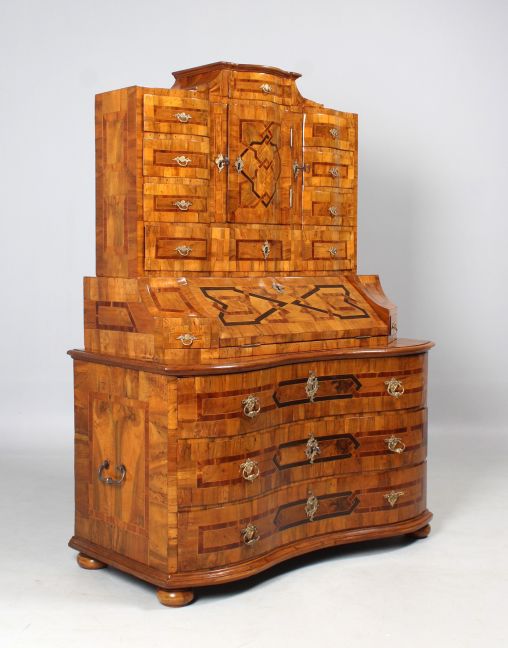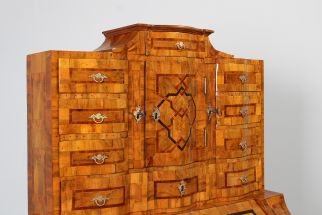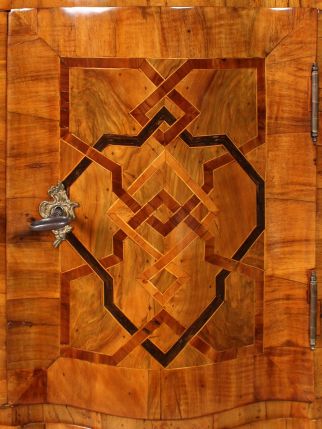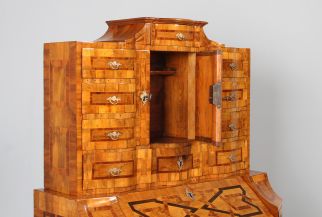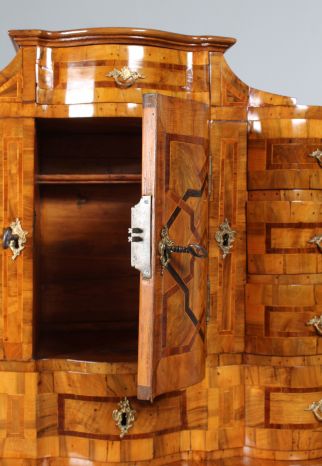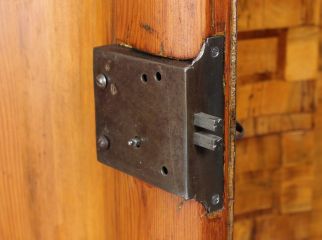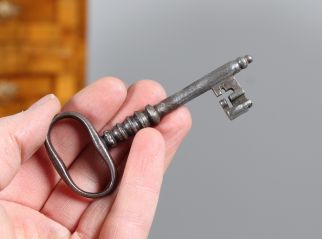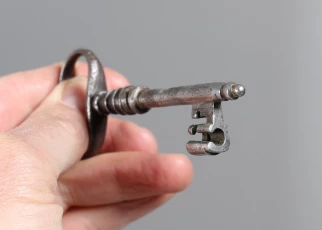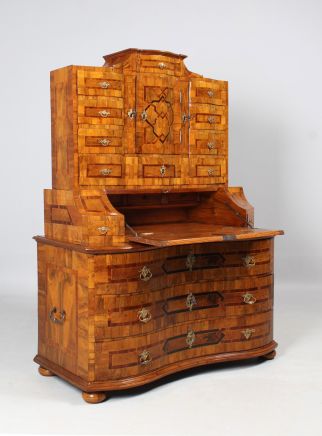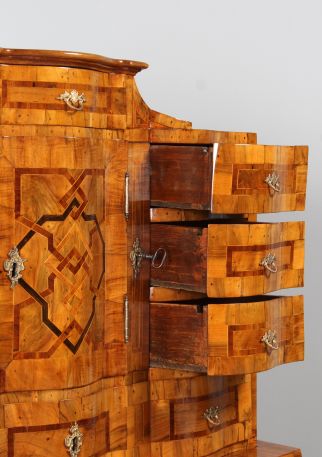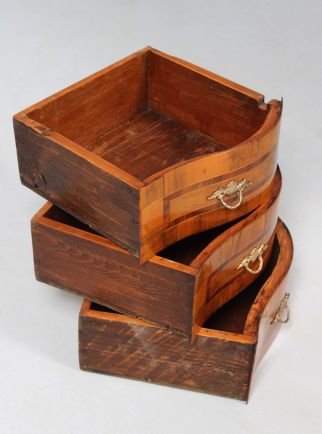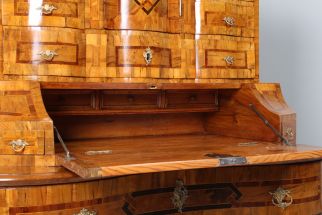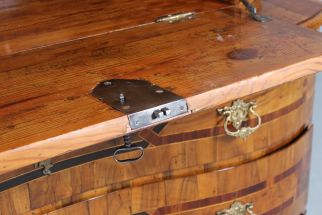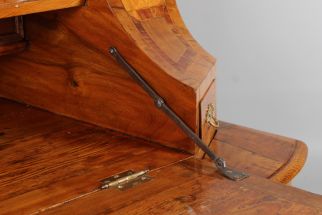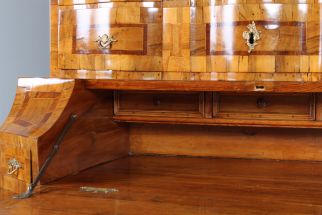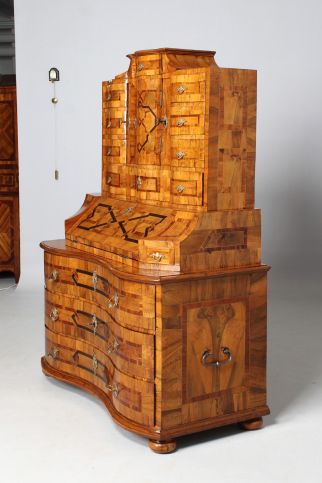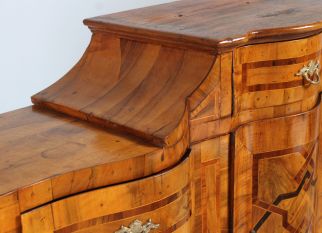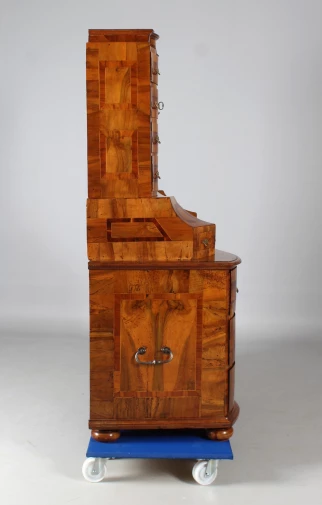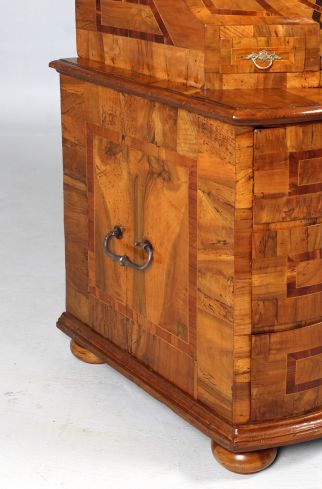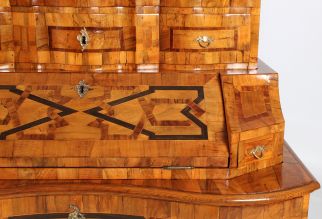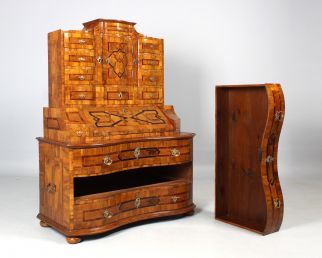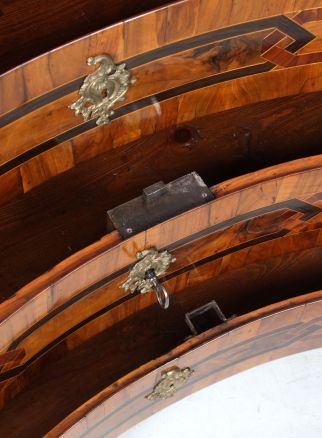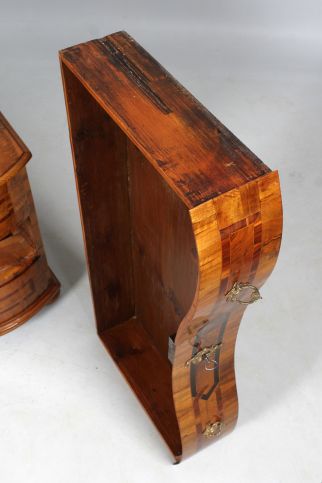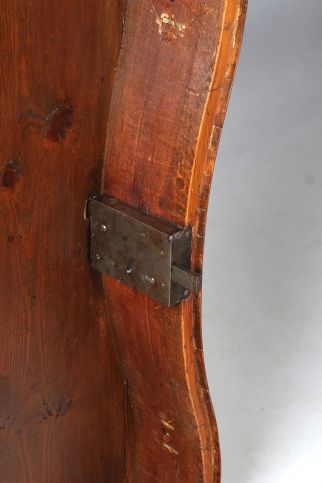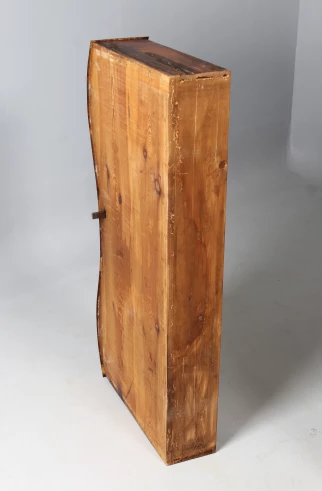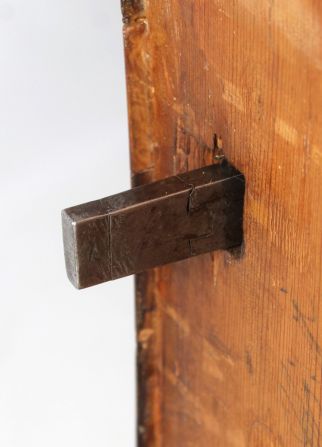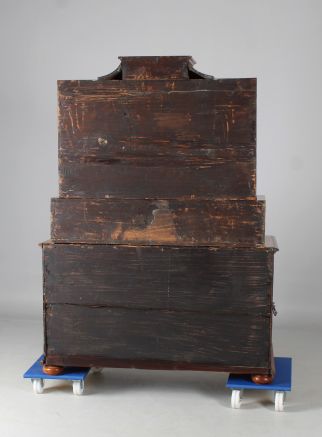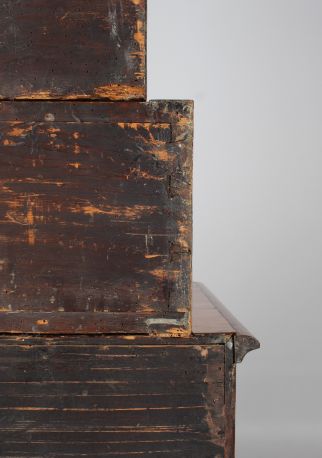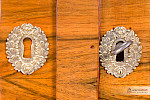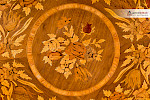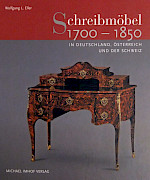Baroque Tabernacle Secretary in Walnut with Bandelwerk
Upper Bavaria
Walnut
Baroque around 1750
Dimensions: H x W x D: 175 x 129 x 63 cm
Description:
South German tabernacle secretary in walnut veneer with inlays of plum, bog oak and maple.
Chest of drawers standing on round squeeze feet with a three-bay curved front and wrought iron carrying handles on the sides. The top edge and base are carved and sanded to shape from solid walnut.
The original heavy box lock is mounted in the middle of the three drawers, closing upwards and downwards and thus locking the other two drawers as well. You can see this clearly in the attached video.
Please also take a look at the photo showing the latch closing downwards. Isn't it wonderfully and finely extended by hand? Details like this always make me marvel anew at the skills of the craftsmen of that time....
Above the chest of drawers is the writing compartment behind the slanted flap. On the left and right there is a small drawer next to the flap. The writing flap is held in place by the original wrought iron brackets. Inside, there are three top drawers in a row.
The top is a tabernacle compartment surrounded by eight drawers. To the left and right of the door we see two further locks by means of which the six outer drawers can be centrally locked. The impressive bar locks mounted in the carcase are hand-forged and absolutely authentic!
The marquetry at the front is intertwined and interconnected. The individual contrasting woods are discreetly accentuated and set off by thread inlays of maple.
The arrangement of the top drawer ensures that the secretary does not appear squat, but light, elegant and dynamic.
Interesting facts:
Derived from the chest of drawers, the upright secretary developed into a piece of representational furniture in the 18th century. Like the chest of drawers, it became an important piece of furniture in both bourgeois and courtly interior design.
As a multifunctional piece of furniture, usually consisting of three sections, it was a specialised refinement of the chest of drawers. It consists of a chest-like lower section with drawers. More rarely, this lower section also has two doors, sometimes with a cut-out knee space.
The writing section, often with an angled writing flap in many constructive and design variations, is placed on the lower section and usually springs back slightly at its front edge. Above it is the top, which occurs in two basic forms: the two-door cantourge top, which can also be a display case top, and the tabernacle top, which occurs mainly in southern Germany, with a central door compartment and flanking, multi-level rows of drawers.
In terms of construction, there are two variants of the top secretary: in southern and south-western Germany, there is mainly the three-part arrangement (à trois corps), while in central Germany, but also in Lower Saxony and in the north, the two-part arrangement (à deux corps) predominates. Here, the writing part is firmly connected to the lower part.
Technically, many achievements are applied. Ingenious secret compartments, concealed mechanisms and fancy structures were created on the writing part. As a typical piece of 18th century furniture, the top secretary, like the chest of drawers, developed into a representational object with decorative development, which, in the case of courtly representatives, could become highlights of furniture making.
No epoch before or after brought it to such a highly developed flowering, of which especially this top furniture still bears impressive witness today.
[Source: Uwe Dobler - Barock-Möbel p. 184]
Condition:
Restored and shellac polished condition. Authentic patina. The drawers run well and smoothly, all locks work.
Comparable pieces of furniture can be found in the specialist literature:
Wolfgang L. Eller - Writing Furniture 1700-1850 p. 66
Uwe Dobler - Baroque Furniture p. 207
Article found under: Secretaries
Baroque Tabernacle Secretary
Produktvideo: Barock Tabernakel Sekretär
Also interesting
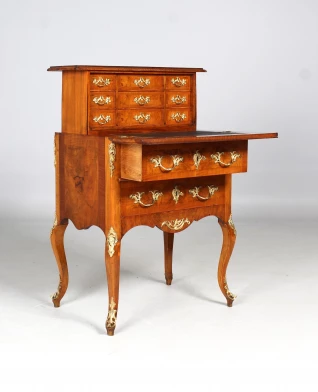
Antique transformable furniture so-called Secretaire à la Bougogne
France
Walnut
second half 19th century
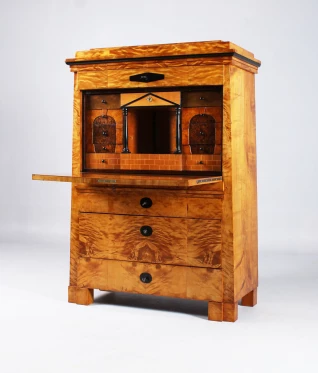
Tapered Biedermeier Secretary
North-East Germany
Birch
Biedermeier around 1820
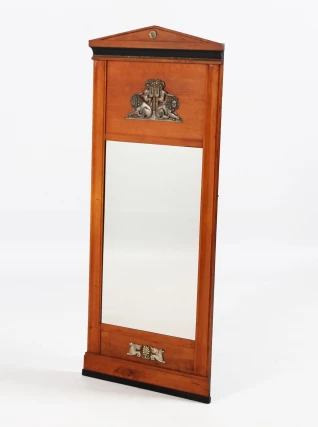
Biedermeier pillar mirror
Central Germany / Thuringia
Cherry
Biedermeier around 1825
